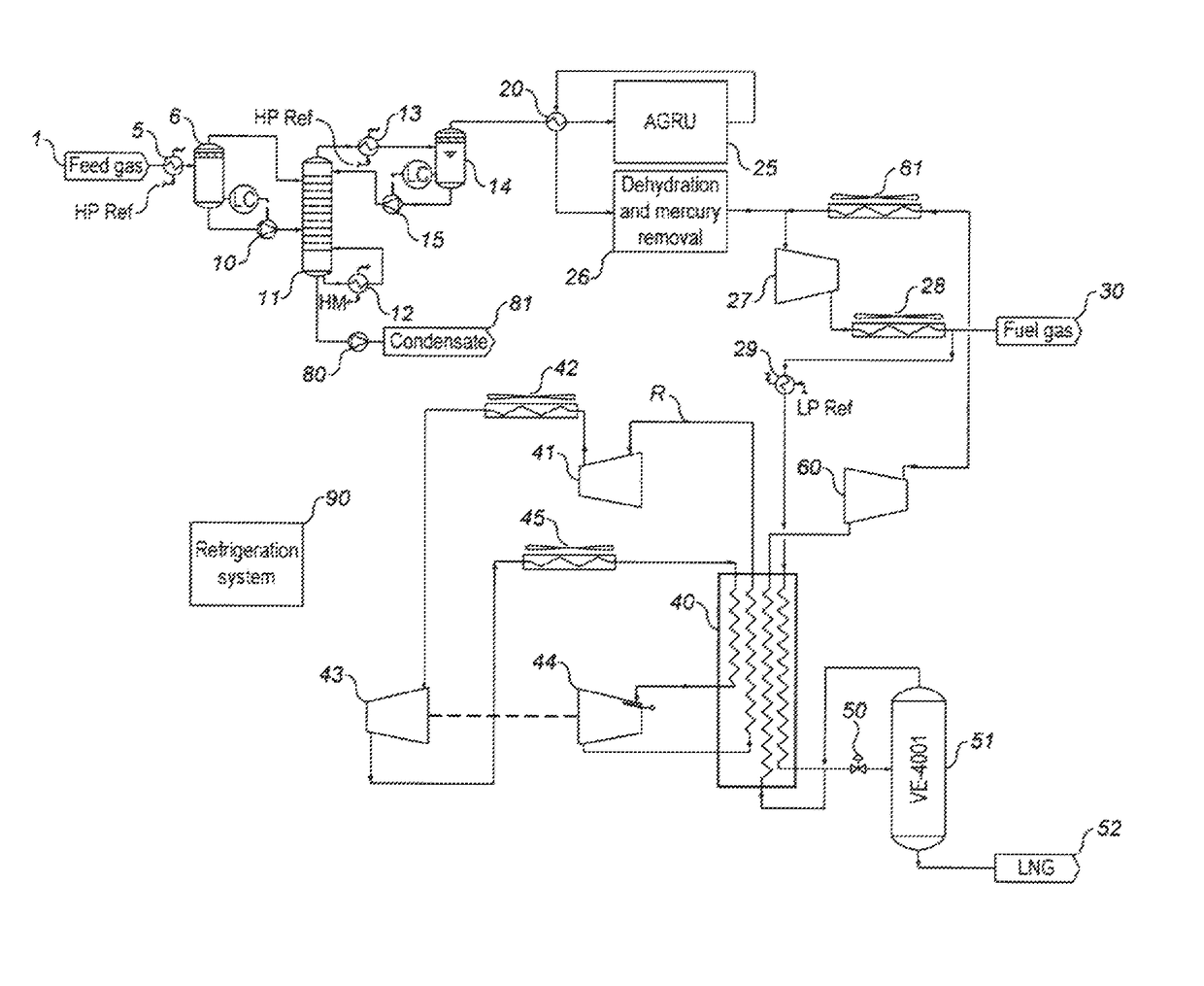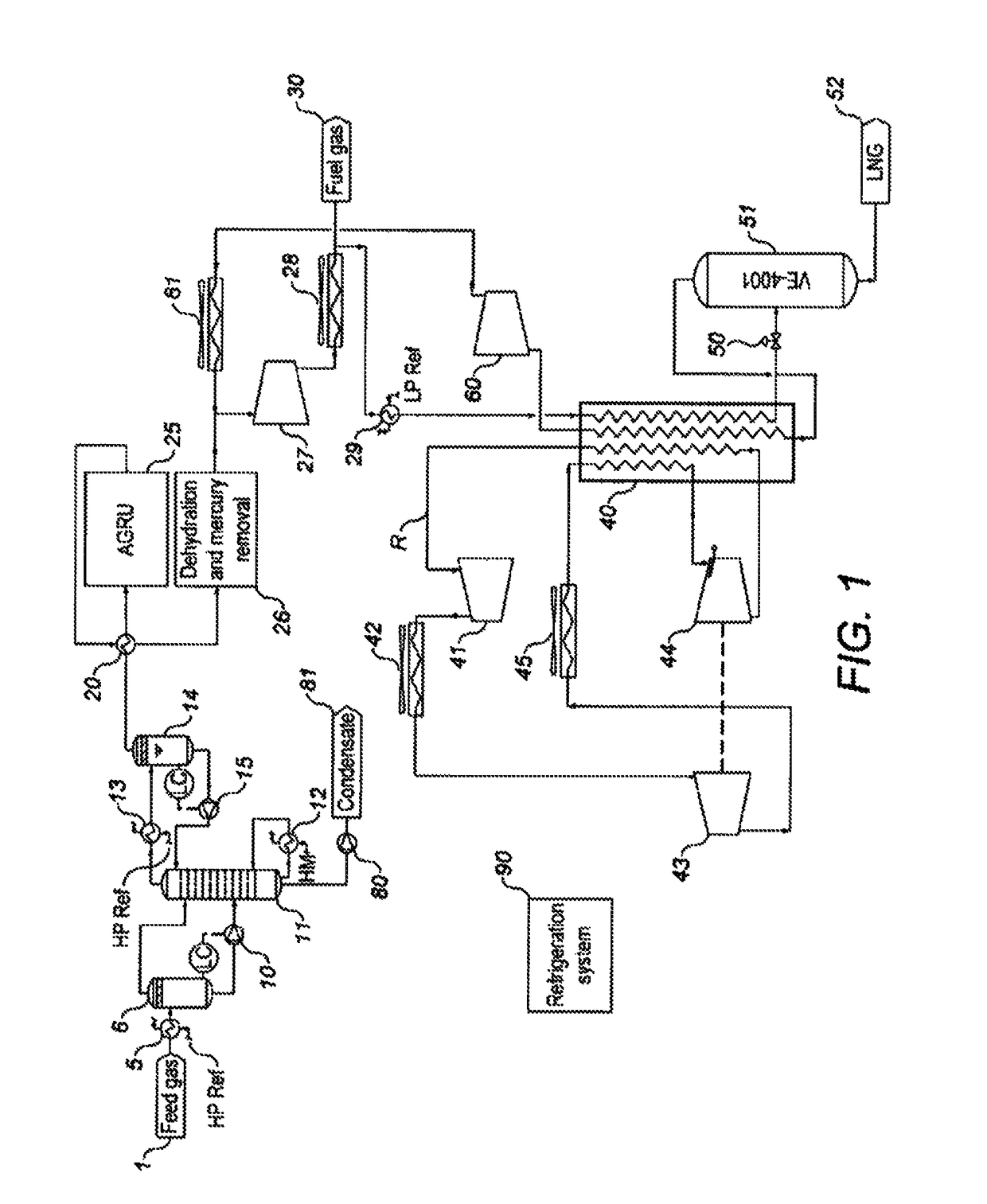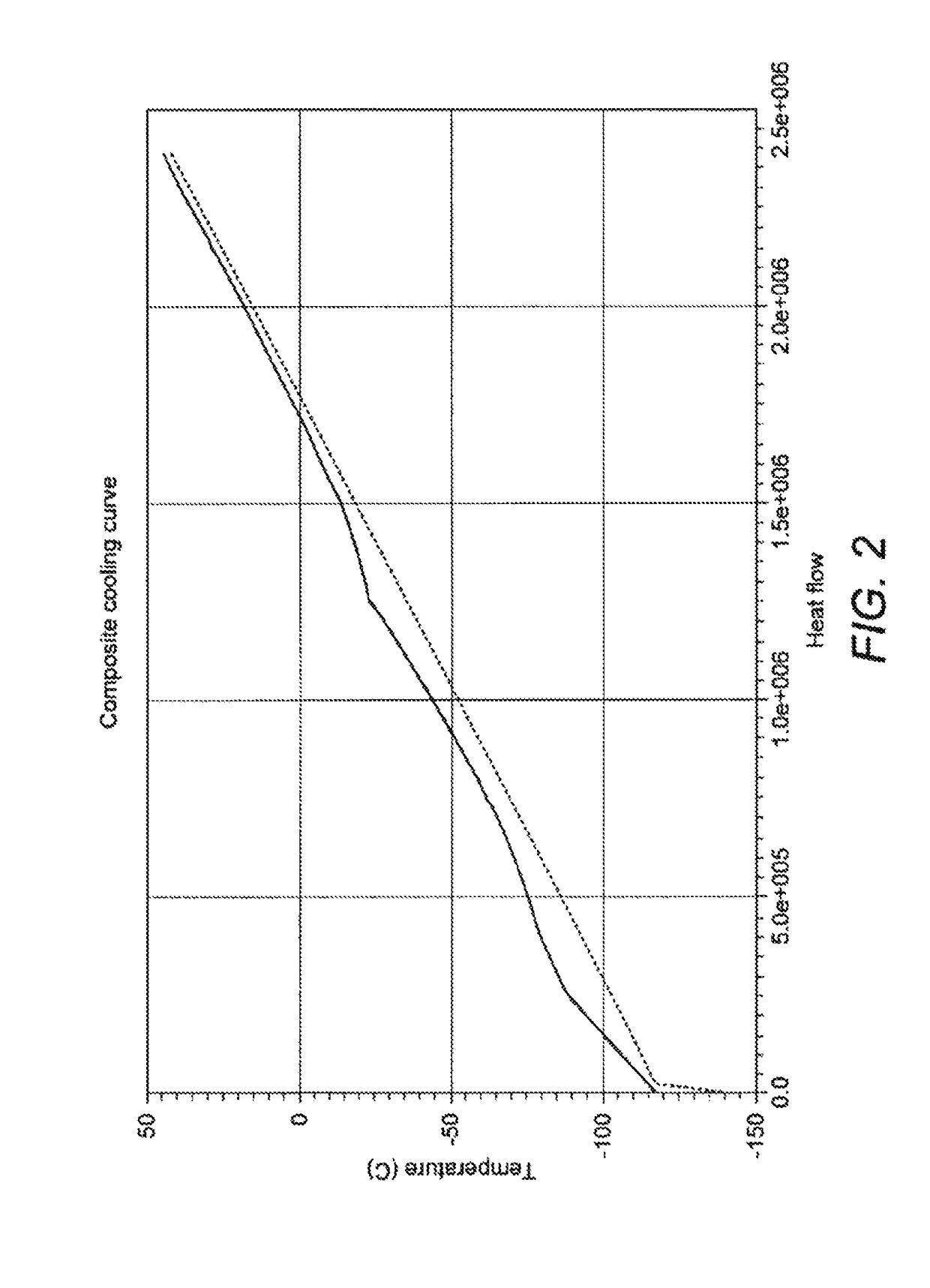Process for natural gas liquefaction
a technology of natural gas and liquefaction, which is applied in the direction of liquefaction, gaseous fuels, lighting and heating apparatus, etc., to achieve the effect of high availability and equivalent thermodynamic performan
- Summary
- Abstract
- Description
- Claims
- Application Information
AI Technical Summary
Benefits of technology
Problems solved by technology
Method used
Image
Examples
example 1
[0107]In accordance with the present invention, use of the vapour compression cycle refrigerant, in conjunction with a single N2 expander cycle greatly reduces the total duty by more than 13 MW. Furthermore the compressor duty for the nitrogen compressors of this Example is actually smaller than the dual N2 expander cycle of Comparative Example 2. This indicates the small CAPEX need for the plant as the gas turbine is a big cost in the total CAPEX.
example 2
[0108]Use of the vapour compression cycle refrigerant in conjunction with a dual N2 expander cycle results in an even greater reduction in compressor duty. Although the duty is 2 MW less than for Example 1, the same model of gas turbine is still needed, which indicates no cost saving on the gas turbine but greater CAPEX on the second turboexpander.
[0109]It is obvious that the present invention is advantageous in terms of the overall process efficiency (with an overall thermal efficiency of 91.13%) and CAPEX.
[0110]
TABLE 1Performance comparison of different natural gas liquefaction cyclesVapourcompressioncyclecompressorN2For 80dutycompressormmscfddriven byduty drivenN2of feedTotalelectricalby gascompressorassociatedCompressormotorturbinegas turbinegasduty (MW)(MW)(MW)selectionComparative37037LM6000,Example 1Comparative27027PGT25+,Example 2RB211-6762Example 123.74.619.1PGT25,RB211-6556,Titan 250Example 221.74.617.1PGT25,RB211-6556,Titan 250
PUM
| Property | Measurement | Unit |
|---|---|---|
| absolute pressure | aaaaa | aaaaa |
| temperature | aaaaa | aaaaa |
| absolute pressure | aaaaa | aaaaa |
Abstract
Description
Claims
Application Information
 Login to View More
Login to View More - R&D
- Intellectual Property
- Life Sciences
- Materials
- Tech Scout
- Unparalleled Data Quality
- Higher Quality Content
- 60% Fewer Hallucinations
Browse by: Latest US Patents, China's latest patents, Technical Efficacy Thesaurus, Application Domain, Technology Topic, Popular Technical Reports.
© 2025 PatSnap. All rights reserved.Legal|Privacy policy|Modern Slavery Act Transparency Statement|Sitemap|About US| Contact US: help@patsnap.com



